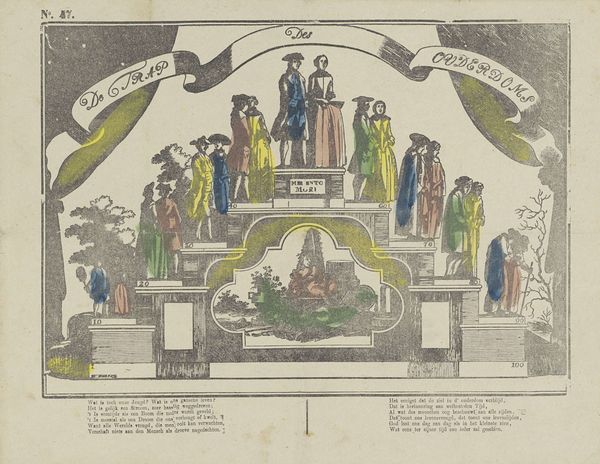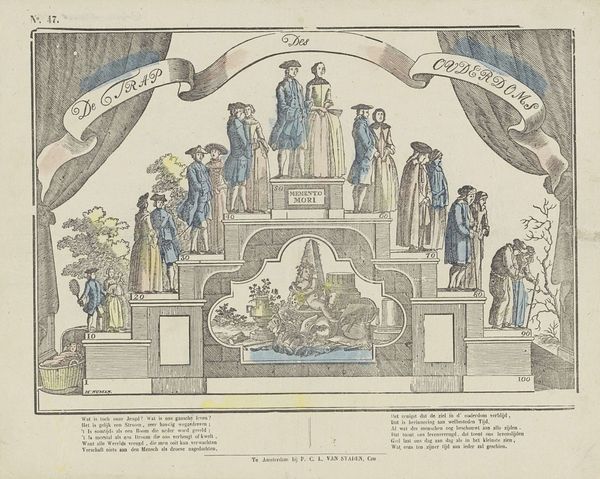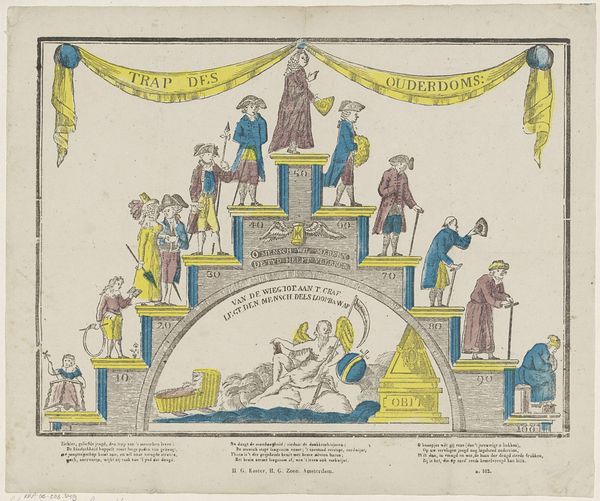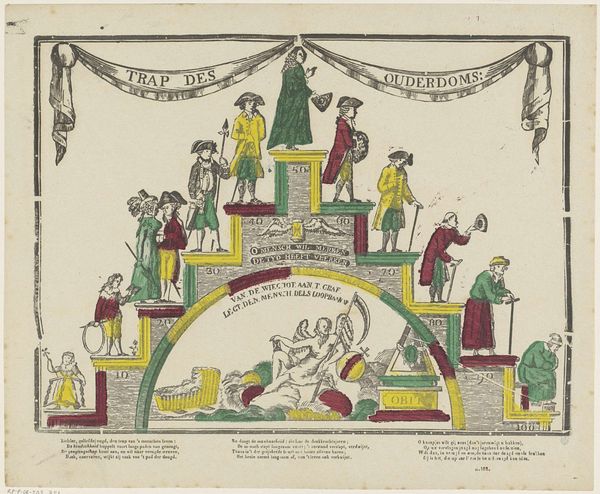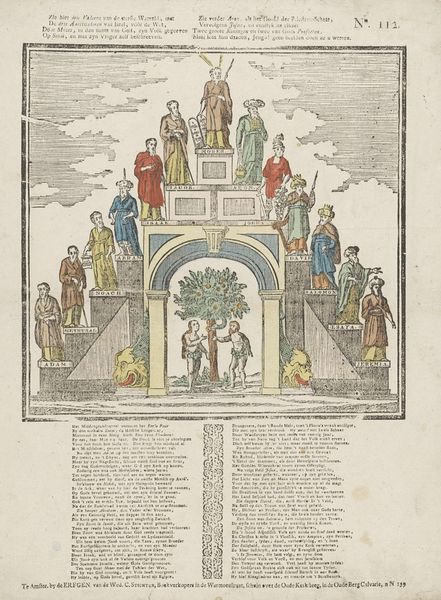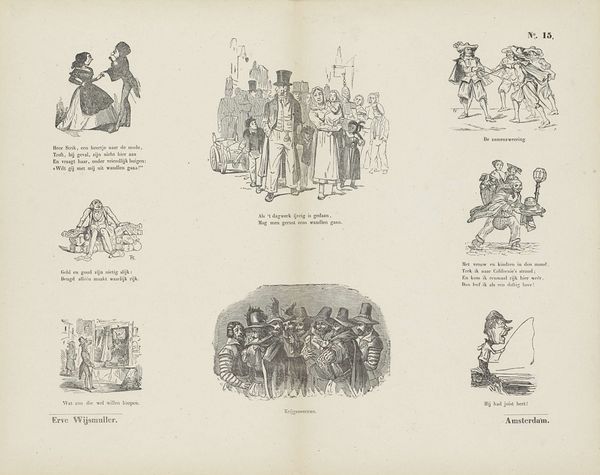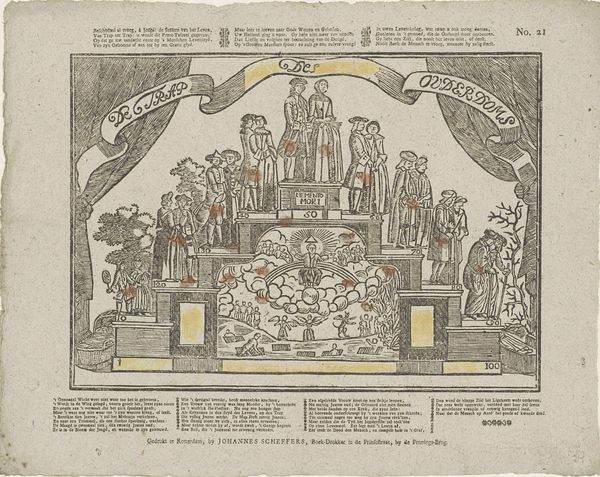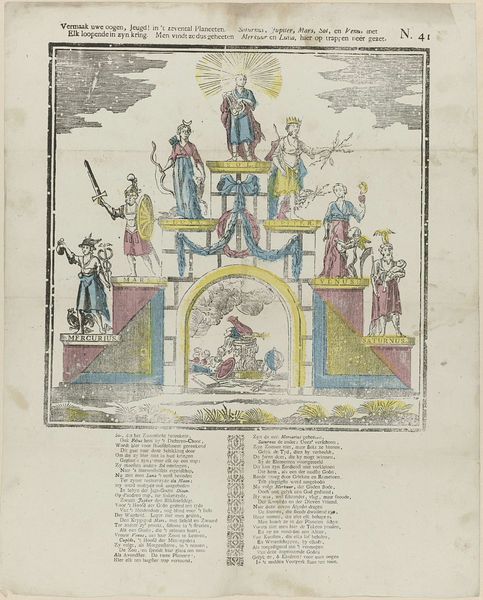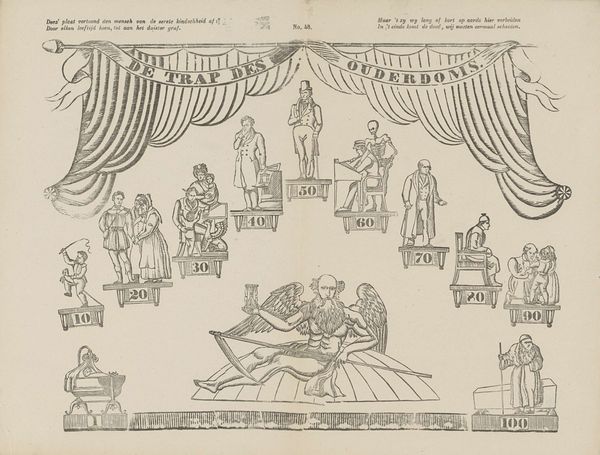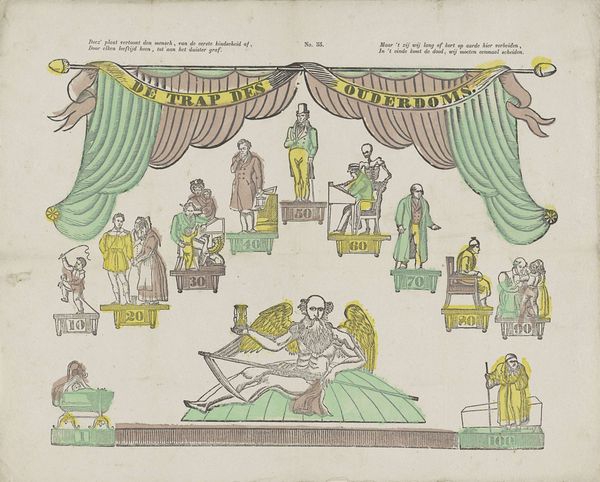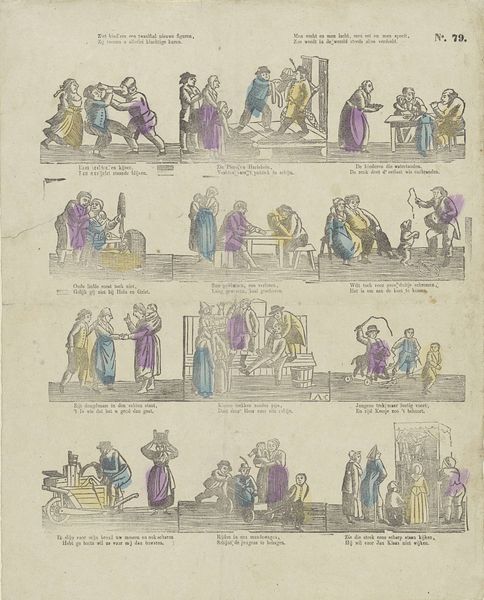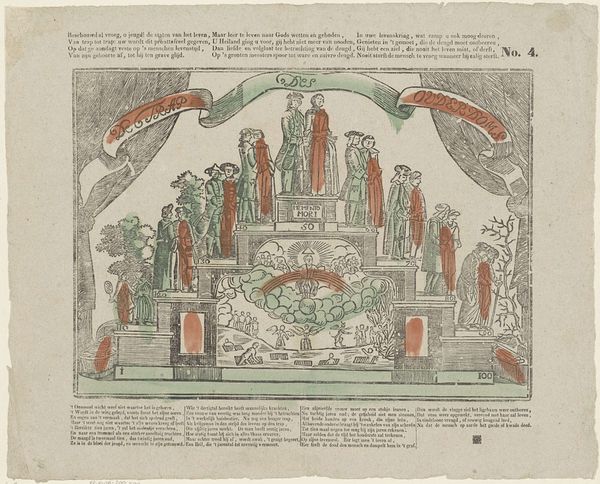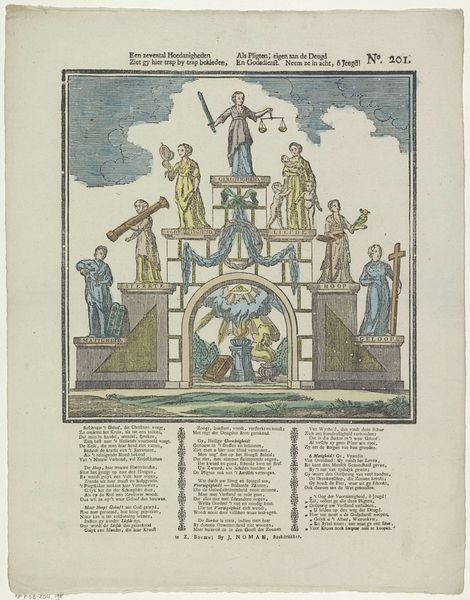
print, etching, engraving
#
portrait
#
allegory
#
narrative-art
# print
#
etching
#
figuration
#
line
#
genre-painting
#
history-painting
#
academic-art
#
engraving
#
realism
Dimensions: height 305 mm, width 396 mm
Copyright: Rijks Museum: Open Domain
Curator: Today, we’re looking at “The Staircase of Old Age,” a print made sometime between 1850 and 1870, and currently held in the Rijksmuseum. It’s attributed to Hermanus Numan. What's your first impression? Editor: Grim. Stark. Linear, in that terribly obvious allegorical way. I suppose that's the point. The image has an oppressive weight. Curator: Oppressive, yes, and certainly didactic. Considering this is a print—etching, and possibly some engraving involved—I'm immediately drawn to the question of its dissemination. Who was Numan expecting to consume this image, and how? These lines, and how sharply they're articulated... Editor: Let’s look closer at the symbolism. The staircase itself is broken into nine levels, each marked with a decade. At the top, we see the idealized couple, youthful, vigorous. Lower down, figures become stooped, burdened…skeletal even at 100. Note the inscription, "Hic Memento Mori." Curator: Indeed. That reminder of mortality certainly speaks to the print's function. Was it a parlor decoration, a warning hung in a school, a broadside distributed at a funeral? The labor involved in the etching process, and in producing multiple impressions, suggests it was meant for relatively wide consumption. Editor: Absolutely, and think of the iconography Numan pulls from: classical depictions of the Ages of Man, of course, but also the medieval obsession with death, the *danse macabre*. He’s layering symbols, almost too heavily, don’t you think? Curator: Perhaps it’s effective precisely because of its bluntness. The imagery isn't subtle, and that aligns with its probable function as a moral lesson for the masses. I wonder about the paper itself – its composition, the source... Editor: To me, it speaks to how collective memory relies on recognizable symbols. Even now, removed from the culture that directly produced it, we immediately grasp the print's meaning. The power of archetypes, right? The image relies on established notions of beauty, health, and decay. Curator: Fascinating how our focus highlights such different aspects of this relatively simple print. For me, it is that act of production that anchors my analysis, of creating meaning through tangible and widely available print media. Editor: And I see a rather enduring narrative about decline and the weight of time. It certainly makes me think about how we visually encode the experience of aging even today.
Comments
No comments
Be the first to comment and join the conversation on the ultimate creative platform.
